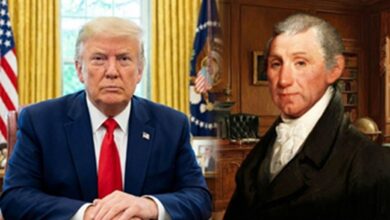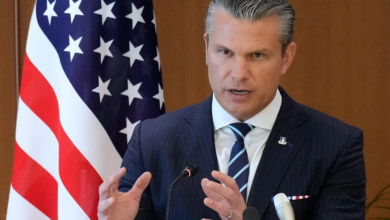Latin America Faces Trump’s Tariff Shock With Risks—and Unexpected Openings

Trump’s newest tariffs have landed like a thunderclap across global supply chains, rattling allies and rivals as Washington insists the world pay for America’s growing trade deficit. Yet even as tensions rise, Latin America may escape the worst damage—if it can navigate the political and economic crosscurrents fast enough to seize unexpected openings.
Tariffs as politics, not economics
The White House frames its tariff blitz as a patriotic correction to a broken system. The United States ended 2024 with a $904 billion trade deficit, nearly double the gap when Trump first took office. The message from Washington is straightforward: make foreign goods more expensive, revive American manufacturing, and force trading partners to accept US terms.
But in practice, the new tariffs read less like a calibrated economic plan and more like political choreography. As Americas Quarterly notes, the harshest blows fall on countries closest to American supply chains—Canada, South Korea, Japan, the United Kingdom, and Mexico. Latin America, with one key exception, is not Washington’s primary target. Setting Mexico aside, the US actually runs a trade surplus with the region, and most countries face only a 10% tariff, manageable but hardly painless.
Then there is Brazil, singled out for a punishing 50% tariff, even though US companies sell far more to Brazil than they buy—and even though Washington recorded a $29 billion surplus with Brasília last year. The official justification? Trump accused the Brazilian government of being “unfriendly” and of persecuting former President Jair Bolsonaro. As Americas Quarterly reported, the explanation sounded far more like a a campaign-trail grievance than an an economic analysis.
For Latin American diplomats, the message was clear: this is politics in the language of trade policy, and no one should expect strict logic behind the numbers.
Mexico is squeezed between tariffs and leverage
If one Latin American country stands directly in the line of fire, it is Mexico, whose economy depends overwhelmingly on the US market. More than 80% of its exports go north, and a sweeping 25% tariff now covers most Mexican imports into the US. The White House justifies the move not just with trade numbers—the US deficit with Mexico hit $176 billion in 2024—but with grievances over migration and drugs at the border.
The USMCA trade pact offers some protection: roughly 85% of Mexican exports still cross tariff-free. But universal tariffs of around 50% on steel, aluminium, and copper spare no one. As the US’s third-largest supplier of these metals, Mexico is already feeling a squeeze—lost sales, thinner margins, and disrupted supply chains, according to Americas Quarterly.
President Claudia Sheinbaum has responded with a mix of crackdowns and negotiations. Her government has shut down more than 1,000 phantom Asian steel mills—warehouses used to disguise Chinese steel as Mexican—and has signaled readiness to raise Mexico’s own tariffs on Chinese cars, steel, and textiles, sometimes up to 50%. The message to Washington is unmistakable: ease the pressure on us, and we will help you close China’s back door into your market.
Mexico’s crown jewel, the auto industry, faces an even sharper dilemma. A universal 25% US tariff hits imported vehicles and parts unless at least 40% of a Mexican-made car’s value comes from US content—something most models fail to meet. Japan has already negotiated a reduced 15% rate, and the EU has secured a similar break, leaving Mexican factories at a disadvantage and even hurting US companies like General Motors and Stellantis, which rely on Mexican production.
Mexico can still bargain—but the clock is ticking.

Brazil’s punishment—and Washington’s gamble
Brazil may be the other major loser in the region, though the damage is narrower than the headlines suggest. Just 12% of Brazilian exports go to the US, and Washington carved out exceptions from the 50% tariff for orange juice, hydrocarbons, minerals, wood pulp, and aircraft.
Still, officials expect over one-third of Brazilian sales to the US to be affected. The hardest-hit sectors—coffee, beef, ethanol, and tropical fruits—carry their own strategic risks. Coffee illustrates the paradox: Brazil supplies roughly 30% of US imports and dominates the market for arabica, the bean behind American specialty roasts. The tariff might raise US prices or push buyers toward lower-quality blends.
Meanwhile, two of Brazil’s three largest beef exporters own massive plants inside the United States. Higher domestic beef prices could actually boost their margins, even as ranchers back home lose market share.
In Brasília, the frustration is palpable. What Washington describes as a tariff to punish “unfriendly policies,” many Brazilian officials see as a geopolitical warning shot—and a gamble that risks alienating South America’s largest economy at a moment when China is deepening its regional influence.
As one analyst told Americas Quarterly, Trump’s tariff policy toward Brazil “hurts the wrong sectors and sends the wrong message.”
Winners, losers, and a rewired trade map
For the rest of Latin America, the picture is far more mixed—and in some cases unexpectedly bright. Most countries now face a 10% across-the-board tariff on exports to the US. For many exporters—especially those selling commodities to Asia and Europe—that hit is survivable.
Big copper suppliers like Chile and Peru avoided the nightmare scenario: raw and refined copper were spared from the steepest tariffs, meaning most mining companies can continue selling to the US or shift shipments to Asia and Europe with limited damage.
And as always in trade wars, one country’s protectionism becomes another’s opportunity.
When China retaliated against US farmers in the 2018–19 tariff battles, it turned heavily to Brazil and Argentina for soy and meat. That same pattern is reemerging. Renewed tensions are pushing Chinese buyers to increase soybean purchases from Argentina and Uruguay, while Mexico—looking for cheaper beef amid its own tariff pressure—has begun sourcing more meat from Brazil, according to Americas Quarterly.
Meanwhile, Europe has revived its once-stalled Mercosur trade agreement, racing it toward a final vote that could open vast new markets for South American exporters weary of Washington’s unpredictability.
For finance ministers from Santiago to Montevideo, the task is straightforward: use the shock to diversify, hedge, and prepare for the next geopolitical tremor.
Trump’s tariffs have not frozen Latin America’s prospects. They have rearranged them. The region’s exporters now stand on shifting ground—some scrambling to cushion blows, others quietly slipping into markets once dominated by the Americans themselves.
In a world of sudden border taxes and political sword-rattling, one thing is becoming clear: Latin America’s success will depend on how quickly it can look beyond Washington and build new anchors in an unsettled global economy.
Also Read: Can Amazon “Superfoods” Save the Forest? Inside Belém’s Bid to Turn Biodiversity into a Bioeconomy





